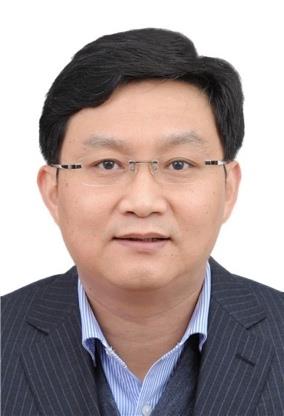 HKU Department of Earth Science
HKU Department of Earth Science
Seminar

The big mantle wedge under eastern Asia and its role in intraplate basalt generation and cratonic destruction
-
Date
June 5,2023
-
Time
3:30PM
-
Venue
JL104
-
Speaker
Prof. Yigang Xu Academician, State Key Laboratory of Isotope Geochemistry, Guangzhou Institute of Geochemistry, Chinese Academy of Sciences
The roles of subduction of the Pacific plate and the big mantle wedge (BMW) in the evolution of eastern Asian continental margin have attracted lots of attention in recent years. This paper reviews recent progresses regarding composition and chemical heterogeneity of the BMW beneath Eastern Asia amd genesis of Cenozoic intraplate basalts in east Asia, and attempts to put forward a general model accounting for the generation of intraplate magma in a BMW system. Some key points are listed in the following. (1) Cenozoic basalts from eastern China are interpreted as a mixture of high-Si melts and low-Si melts. Whereever basalts are from, northeast, north or south China, share a common low-Si basalt endmember, which is characterized by high alkali, Fe2O3T and TiO2 contents, HIMU-type trace element composition and relatively low 206Pb/204Pb compared to classic HIMU basalts. Their Nd-Hf isotopic compositions resemble that of Pacific crust and their source is composed of carbonated eclogites and peridotites. The high-Si basalt endmember is characterized by low alkali, Fe2O3T and TiO2 contents, Indian Mantle-type Pb-Nd-Hf isotopic compositions, and a garnet pyroxenitic source. High-Si basalts show isotopic provinciality, those from North China and South China having EM1-type and EM2-type components, respectively, while basalts from Northeast China containing both EM1- and EM2-type components. (2) The source of Cenozoic basalts from eastern China contains abundant recycled materials, including oceanic crust and lithospheric mantle components as well as carbonate sediments and water. Together with spatial distribution of Cenozoic basalts and regional seismic tomography, it is inferred that oceanic components, water and carbonate sediments are from subducted Pacific slab stagnated in the mantle transition zone, whereas EM1and EM2 components are from shallow lithospheric mantle. (3) Comparison of solidi of garnet pyroxenite, carbonated eclogite and peridotite with regional geotherm constrains the initial melting depth of high-Si and low-Si basalts to <100 km and ~300 km, respectively. It is suggested that the BMW under eastern Asia is vertically heterogeneous, the upper part containing EM1and EM2 components and isotopically resembling Indian mantle domain, whereas the lower part containing components derived from Pacific plate. (4) Melting of the BMW to generate Cenozoic intraplate basalt is triggered by decarbonization and dehydration of slab stagnated in the mantle transition zone.
Biography: Dr. Yi-Gang Xu earned a B.Sc. degree from Zhejiang University in 1987, and a Ph.D. degree in Geochemistry from University of Paris 7 in 1994. Following two-year postdoctoral research at the Royal Holloway University of London, he joined Guangzhou Institute of Geochemistry, Chinese Academy of Sciences in 1996 and is now professor and Director of the State Key Laboratory of Isotope Geochemistry. In the past three decades, Prof. Yigang Xu has achieved an outstanding and international reputation for his important and outstanding work on recognition of the Emeishan mantle plume, destruction of continental lithosphere of the North China Craton and origin of within-plate basalts. His scientific achievements are well reflected in more than 250 academic papers he has published in leading international journals, which have been cited for more than 25587 times, with a H-index = 84. Because of his great achievements, Prof. Yigagn Xu was awarded “Distinguished Young Scholars (NSFC) in 1999, “Shen-Su Sun Award” in 2007, “China National Natural Science Award (2nd class)” in 2011, and “Li Si-Guang Award” in 2013, and he was elected to be the academician of the Chinese Academy of Sciences in 2017, Fellow of the Geological Society of America in 2018 and Fellow of American Geophysical Union in 2021. Prof. Xu is also the editors and Associate Editors of a number of leading journals.
Additional information: Prof G.C. Zhao, gzhao@hku.hk
